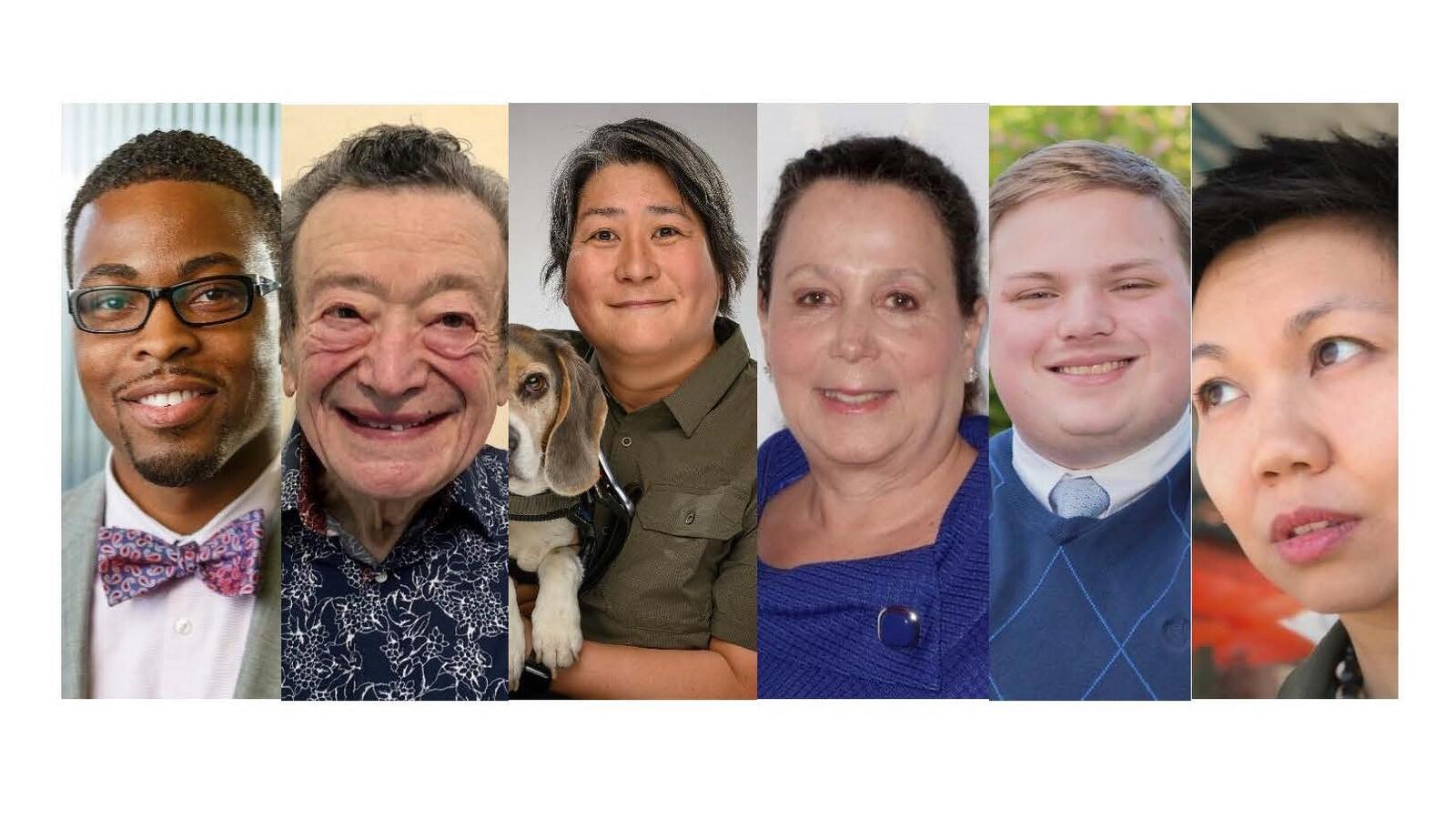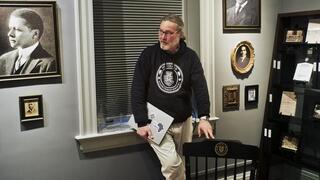As many as one in four adults in the United States live with some type of disability, according to the Centers for Disease Control and Prevention. They encompass every age, race, ethnicity, and social class. Yet in public discourse on discrimination, stigma, marginalization, and DEI (diversity, equity and inclusion), disability is often overlooked.
In a livestream forum led by Yale alumni as part of the IMPACT 2 series, a diverse panel of disability rights leaders, advocates, and experts discussed the intersectionality of disability justice and the future of the national disability rights movement following the recent 30th anniversary of the Americans with Disabilities Act (ADA), made possible after a long civil rights struggle that was led and supported by a broad coalition across the country.
The discussion was moderated by Janni Lehrer-Stein ’78, an attorney and disability rights advocate who served on the U.S. National Council on Disability, and Benjamin Nadolsky ’18, a consultant with the World Institute on Disability. They are co-chairs of the Yale DiversAbility Alumni Group, a nascent organization that engages and connects alumni with disabilities (and allies) and galvanizes support to advance and improve accessibility within the Yale community and beyond. The speaker lineup consisted of:
- Karen Nakamura ’01 PhD – Robert and Colleen Haas Distinguished Chair of Disability Studies and Professor of Anthropology at University of California, Berkeley
- Oluwaferanmi Okanlami, MD, MS – Assistant Professor of Family Medicine, Physical Medicine & Rehabilitation, and Urology at Michigan Medicine, and the Interim Director of Services for Students with Disabilities and Director of Adaptive Sports & Fitness within the Division of Student Life at the University of Michigan
- Janice Ta ’10 JD – Intellectual property and technology law attorney at Perkins Coie and former president of National Association of Law Students with Disabilities
- Sid Wolinsky ’61 LLB – Co-founder and former director of Litigation at Disability Rights Advocates
Why Disability Rights Matter to Everyone
According to Wolinsky, a staunch disability rights advocate since the 1960s who as an attorney has litigated numerous anti-discrimination cases, the ADA and other legislation that mandate equal access and opportunity for persons with disabilities benefit society as a whole.
“What is good for people with disabilities almost always is good for everybody – increased access to transportation, increased access to disaster planning, increased access to technology – and we need to continue to emphasize that,” he said.
He indicated that an important factor in the evolution of the disability rights movement to a civil rights movement can be attributed to a shift in thinking by members of the disability community.
“What happened to the disability movement when it became a civil rights movement was exciting and wonderful, because disabled people knew we were objects of charity and pity,” he said. “And turning it into a civil rights movement meant moving it from a privilege to an absolute right.”
In discussing the often-disproportionate impact of disability on minorities, people of color, and underrepresented groups, speakers shared their personal experiences.
Ta, who was born in a refugee camp in Malaysia to Chinese parents and came to the U.S. as an immigrant, said she came to fully appreciate the protections and rights under the ADA later in life.
“I didn’t realize how difficult it was for other people who have disabilities to be employed,” she said. “Now that I’m an adult and have more exposure, I don’t take what I have for granted.”
As a lawyer, Ta said she recognizes the challenges that people with disabilities encounter in her line of work.
“For me, as an attorney with a very visible disability, I limp. I can’t hide my disability. It’s really easy for me to disclose to my employers what I need to succeed – I need physical accessibility,” she said. “But I also know other attorneys who are not able to disclose, for example, learning disabilities or neurological disabilities that they may have.”
Despite the protections and rights that the ADA provides, discrimination and violations abound.
Okanlami, who refers to himself as a “proud wheelchair user” after sustaining a spinal cord injury in his third year of orthopedic surgery residency at Yale, has witnessed and experienced discrimination in the medical field.
“I saw how our own profession treats individuals with disabilities,” he said. “I saw how we pathologize this and make it something that is a negative.”
Born in Nigeria to physician parents and having been raised in the American Midwest, Okanlami shared that the discrimination he felt as a person with a disability left a more indelible impression on him than the discrimination he experienced as a Black man in the U.S.
“The first time I truly felt what it was like to be excluded, to be marginalized, to be discriminated against, was after having my disability,” he said. “That’s when I experienced life on the other side of the stethoscope, because I have been taking care of patients with disabilities for years but I failed to recognize the rights that were being withheld from an entire population that we like to see as the biggest minority group we have given the true intersectionality.”
According to Nakamura, there has been a noticeable increase of educational opportunities for people with disabilities in academia, made possible by the efforts of early pioneers of the disability rights movement and those who followed in their footsteps.
“All the work that people had put in in the 60s and 70s, and other activists, are all coming to fruition,” she said. “We are seeing more and more disabled kids have opportunities that we didn’t have, to find resources that we can only have dreamed about.”
She noted, however, that people with disabilities continue to face significant bias, discrimination, and intolerance at colleges and universities.
“I have seen brilliant people drop out of college, drop out of grad school, drop out of trying to get their job with a PhD, and brilliant people drop out of being an assistant professor, not getting tenure, not even surviving the third-year mark, because academia is incredibly ableist,” she said.
Nakamura added that while people with disabilities enjoy greater access to higher education, their opportunities for gainful employment have actually declined.
“Right now we are 30 years past the ADA and the employment rate for disabled persons has actually gone down since prior to the ADA,” she said.
The Future of Disability Rights
An unabashed defender of the ADA, Wolinsky was also mindful of its limitations. From his perspective, the biggest weakness of the legislation is that it is not self-enforcing. As such, he stressed the importance of the disability rights movement to continue to exert pressure through the courts, which will require lawyers to play a prominent role.
“There was no civil rights movement that has ever made great progress without litigators and without lawyers,” he said, emphasizing the particularly crucial need in the disability space. “There aren’t enough lawyers doing disability rights work and there aren’t enough disability lawyers with disabilities.”
In the fight to achieve equal rights and opportunity, Ta said there is an ongoing need for the disability community to cultivate support from others.
“We need allies,” she said. “We need people who can step in, whether it’s for funding, whether it’s for community building, or whether it’s just for us telling our stories, and having people in places where they can help us tell our stories.”
She further opined that people with disabilities need to continue to assert their rights in the workplace and help elevate the public discourse on disability from accessibility and accommodations to contributions and achievement.
“I talk proudly about my disability and at work, I discuss my disability in the context of what it would take for me to succeed and not what my limitations are,” she said.
According to Okanlami, enforcing anti-discrimination laws, making physical spaces accessible, and dismantling ableist frameworks in society are all important. However, he noted that an attitudinal shift is also necessary.
“We can do a much better job of destigmatizing disability, of recognizing that we are intentionally, and sometimes unintentionally but very often intentionally, excluding people on the basis of something that does not determine the quality of their life or the quality of their work,” he said.
Okanlami emphasized that building a society that is more equitable, more just, and recognizes the value and worth of every individual starts with how each person treats one another.
“While not every individual thinks they can change the world, they can change the way they interact with their neighbor,” he said. “They can change the way they are inclusive of other people.”
For Nakamura, the disability rights movement itself also needs to evolve to address relevant issues and considerations that go beyond physical accessibility and accommodations.
“This next half of the movement really needs to look at intersectional disability justice, to really figure out how our systems structurally combine racism and ableism,” she said.
In closing, Lehrer-Stein reminded viewers that disability does not mean inability, and that people with disabilities are not the other but rather us.
“What you’ve heard today is really about who the disability community is. You’ve heard about bias, and stigma, and marginalization,” she said. “But you have heard so much more about disability pride, about the tremendous creativity, talent and power that resides in this community. We need to be and always intend to be included.”
***
For more information about the Yale DiversAbility Alumni Group, contact Henry Kwan ’05 MA, director for shared interest groups.




